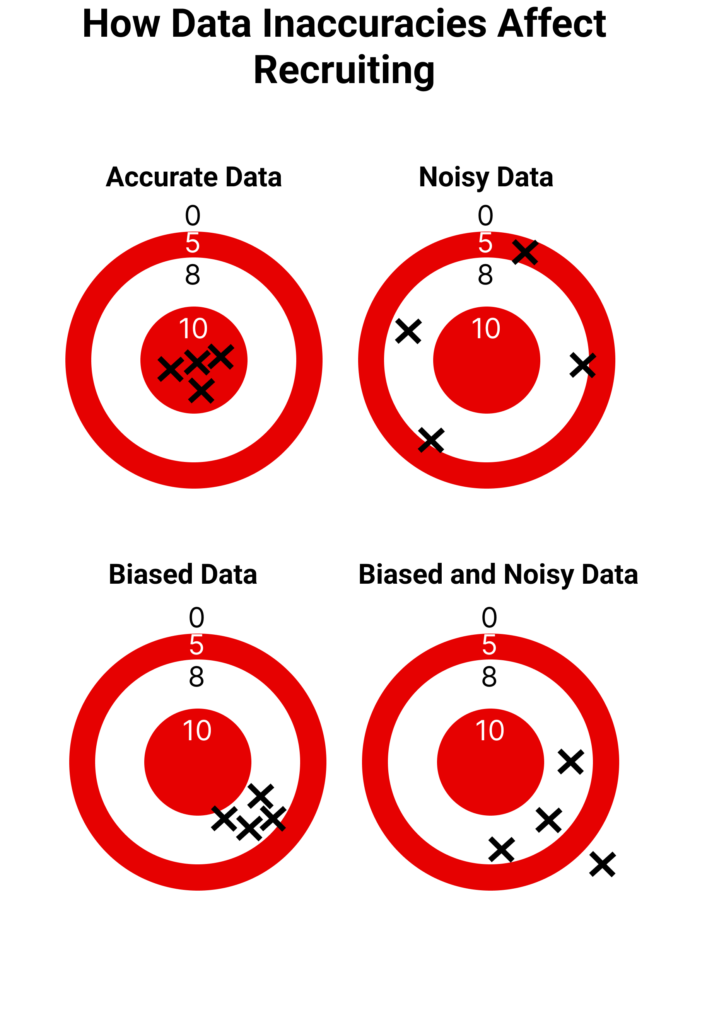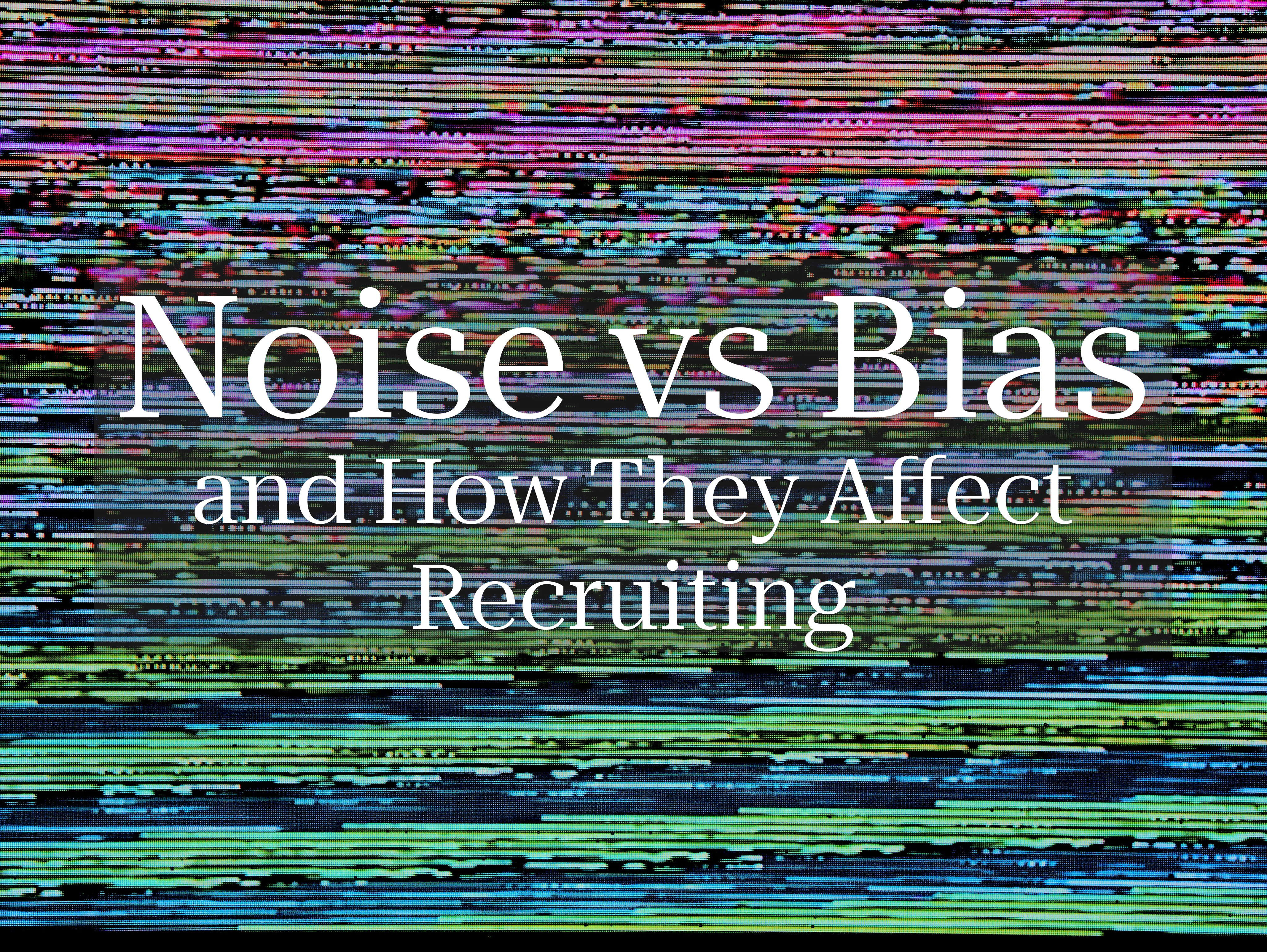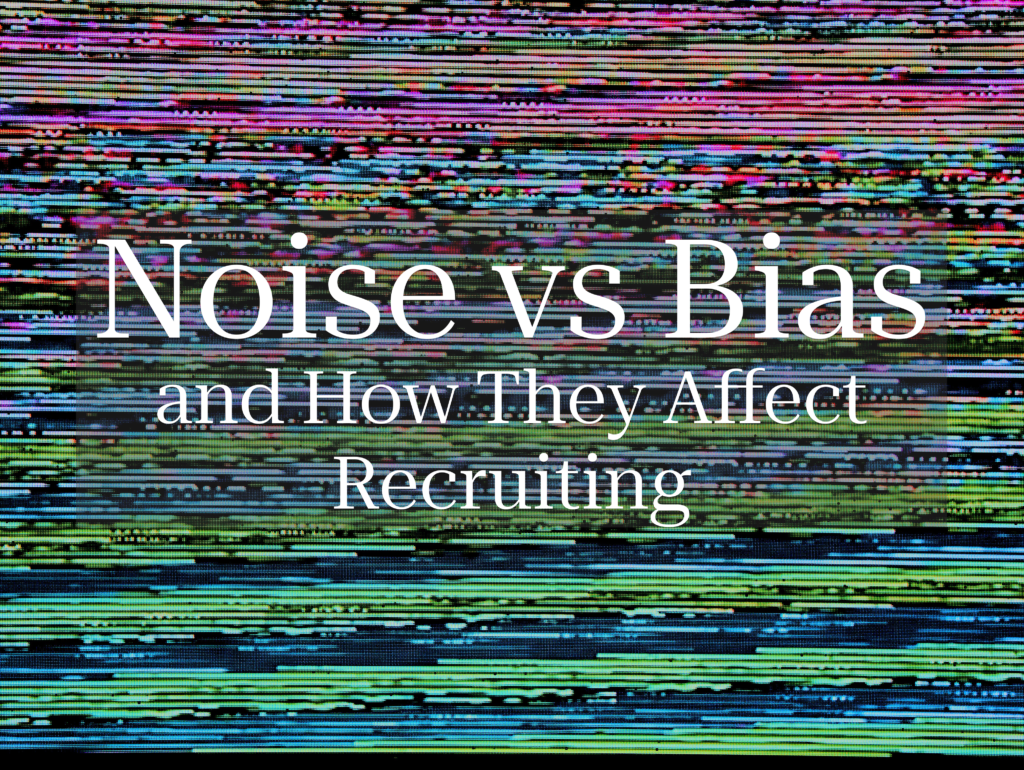The need for clean and reliable data for recruiters to work with is crystal clear. About 40% of employers are settling for candidates they wouldn’t normally hire so they can fill roles faster. The recent passing of Daniel Kahneman, the pioneering psychologist and Nobel laureate, has reignited interest in his groundbreaking work on decision-making, particularly his exploration of statistical noise. Unlike bias, which is the consistent error in one direction, noise represents unwanted variability in information and thus judgments, causing random discrepancies that can be just as damaging.
In this blog post, we’ll delve into the critical distinction between noise and bias in professional judgments and focus on their impact in the hiring process. We’ll explore how noise impacts recruiters and discuss strategies for reducing it.
Understanding Noise and Bias in Hiring
Definition of Noise
Noise is defined as the unwanted variability in the information used to make professional judgments. This concept is crucial in the context of hiring, where TA teams are inundated with loads of candidate data that’s open to analysis by each individual recruiter, leading to inconsistent decision-making among the team. For example, one recruiter might rate a candidate highly due to their impressive resume, while another might give a lower rating based on the same resume but with a different interpretation of the candidate’s experience. This kind of variability can severely undermine the reliability of the hiring process.
Definition of Bias
Bias, on the other hand, refers to the systematic error in judgments that leans consistently in one direction. In hiring, bias might manifest as a preference for candidates from certain schools, certain demographic groups, or those who exhibit particular traits, regardless of their actual fit for the role. For example, if recruiters consistently favor candidates from prestigious universities, this represents a bias that skews the hiring process in favor of those applicants. Everyone is vulnerable to unconscious bias, and it often sneaks into our daily decisions in some shape or form.
Comparison of Noise and Bias
Noise and bias cause errors in judgment differently. Bias leads to consistent errors in one direction (e.g., favoring a specific gender), and is easier to identify and address with training and policies. Noise, however, is trickier. Random inconsistencies in data can lead to poor decisions even if the company is unbiased on average.

Imagine you have an open role that needs to be filled as soon as possible (this hypothetical scenario doesn’t require a huge stretch of the imagination, we know). Looking at the diagram above, where the x’s represent the candidates who move forward in the hiring process, here are a few scenarios to describe the different information sources these candidates are pulled from:
Accurate
You have a comprehensive set of applicants from your existing ATS dataset and external sources, and you’ve leveraged AI to pull together holistic candidate profiles to review before you start reaching out to candidates. Given the wide range of candidates and the use of responsible AI to match the best fits for the role, you’re confident you have a reliable candidate pool to work with as a starting point.
Noisy
Given the time constraint, you’ve decided to just run with the first 40 applicants and interview them at random. There’s no correlation within the backgrounds of those first 40 applicants, so you’re already working with a largely random dataset. Furthermore, seeing as nearly half of those applicants are likely to be unfit for the role, relying on those first 40 applicants will likely lead to poor hiring decisions.
Biased
You have one criterion that you focus on too heavily to benchmark candidates, perhaps you only look for candidates from Ivy League schools or candidates with specific companies in their background. The applicants you interview will all have a similar background, so the data you use to make a final decision will be consistent, but it might miss the mark of what your company needs for the role.
Noisy and Biased
Due to the urgent need to fill the role, you decide to focus on just the first 40 applicants in your applicant tracking system (ATS). On top of that, while screening candidates you find yourself focusing heavily on a specific skill that isn’t necessarily crucial for the role, such as prior experience with a specific software program. This combination creates a situation where the pool of candidates is both random (due to only considering the first 40 applicants) and biased (focusing too heavily on a specific skill).
Compounding Effects of Noise
The effects of noise can significantly impact organizations. The overwhelming amount and variety of information recruiters work with can lead to hiring the wrong people as well as wasted time and attention on the wrong things, such as focusing too much on active candidates. Managing these discrepancies diverts time and resources from critical recruitment activities.
Addressing noise requires recognizing its impact and implementing strategies like structured interviews and standardized evaluation criteria. By reducing noise, organizations can make more consistent and reliable hiring decisions, leading to a more effective workforce.
How Fastr.ai Helps Reduce Noise
Fastr.ai is designed to tackle the issue of noise in the hiring process by leveraging advanced AI technology. Our AI analyzes candidates holistically, understanding the relationships between skills, personal qualities, and job requirements. This comprehensive analysis ensures that all relevant information about a candidate is considered before having the first conversation in the hiring process, while reducing the variability in judgments.
The primary way Fastr.ai reduces noise is by providing fast, consistent and holistic evaluations of candidates. Our AI evaluates each candidate against the same criteria, eliminating the random discrepancies that can occur when different recruiters assess the same applicant. This standardization ensures that all candidates are judged on their merits, leading to more reliable hiring decisions.
Additionally, Fastr.ai helps structure the hiring process by using data-driven insights to guide and align the entire recruiting team. By providing objective recommendations based on a thorough analysis of candidate data, our AI minimizes the influence of individual biases and subjective opinions. This structured approach reduces noise while enhancing the recruiters’ overall efficiency and effectiveness.
Conclusion
Understanding and addressing the issues of noise and bias in hiring is crucial for making better, more consistent recruiting decisions. While bias represents a systematic error in one direction, noise involves random variability that can be just as detrimental. By recognizing the impact of noise and implementing strategies to reduce it, organizations can improve the reliability of their hiring processes.
AI-powered tools like Fastr.ai offer a powerful solution to the problem of noise in recruitment. By providing consistent, data-driven evaluations of candidates, Fastr.ai helps ensure that hiring decisions are based on objective criteria rather than subjective interpretations. This not only reduces noise but also enhances the fairness and efficiency of the hiring process.
With tools like Fastr.ai, organizations can move closer to achieving this goal, creating a more effective and equitable hiring process. Schedule a demo today and see how you can create a better-aligned talent acquisition team.







